As the starting-gun sounds in the race for the Democratic presidential nomination, many people believe that the Democratic Party is more liberal than it used to be. And they’re right, at least if you go by how rank-and-file Democrats characterize themselves. But, as we will see, this complicates Democrats’ efforts to take back the White House in 2020.
A bit of history is in order. A quarter of a century ago, when President Bill Clinton was in the White House and governing as a “new” Democrat, the Democratic party was not a liberal party. In fact, back then, 25 percent of Democrats regarded themselves as liberal, 25 percent as conservative, and 48 percent as moderate. In contrast, as of 2018, the party’s liberal cohort had doubled to 51 percent, while the conservative share of the party had been cut in half to just 13 percent, and the moderates had shrunk by one-third, to 34 percent.
This is the first time in the history of modern survey research that a majority of the Democratic Party has called itself “liberal,” and it helps explain why so many Democratic presidential aspirants have headed left. This does not necessarily mean that a left-leaning candidate is a lock to win the nomination. As we saw in the 2016 Republican contest, if a number of candidates vie for the support of their party’s majority faction, a candidate with a very different orientation may be able to commandeer a plurality.
This liberal trend within the Democratic Party is more than an ideological sorting-out between the two major parties. Yes, many voters, especially in the South, who were once conservative Democrats have shifted their allegiance to the Republican Party. But at the same time, the electorate as a whole has moved left.
In 1994, 38 percent of Americans called themselves conservative, compared to 17 percent for liberals. By 2018, the conservative share had declined slightly, to 35 percent, while the liberal share increased by 9 points, to 26 percent. In other words, in the 24 years since Newt Gingrich’s Republican insurgency toppled the Democratic House majority, the conservative edge over liberals shrank from 21 points to just 9 points, the smallest conservative advantage ever recorded.
While the Democratic party has been dominated by moderates, on the Republican side the right wing has long dominated. As early as 1994, 58 percent of Republicans regarded themselves as conservatives, a share that has risen slowly and steadily to today’s 73 percent. A quarter of a century ago, then, a conservative party faced an uneasy coalition of liberal, moderate, and conservative Democrats. Today, a liberal party and a conservative party confront each other over a widening gap.
At the same time, self-identified Independents, whose share of the electorate stood at a near-record 42 percent at the beginning of 2018, have moved slightly to the left. Since 1994, the conservative share of Independents has decreased slightly, from 31 to 28 percent, while the liberal share ticked up from 18 to 22 percent. As a group, however, Independents have remained a bastion of moderates—46 percent in 1994, 45 percent today.
The bottom line: the polarization among those who hold office is mirrored in the public—a fact that will be front and center as pre-primary and then the primary season begins. Nonetheless, while there is a liberal majority within the Democratic Party, and a larger conservative majority among Republicans, neither is enough for an electoral majority. A candidate who appeals only to liberals or conservatives cannot command an electoral majority. And because there are still more conservatives than liberals, Democrats especially must command a significant majority among moderates to close the gap, a reality that Democratic primary participants would do well to keep in mind as the contest for their party’s presidential nomination heats up.
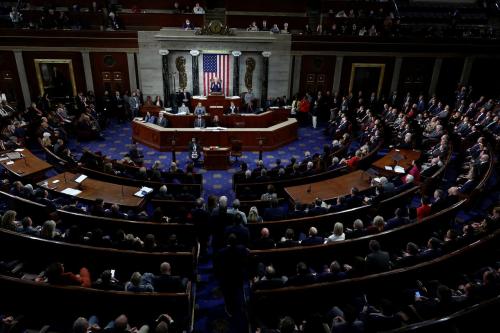
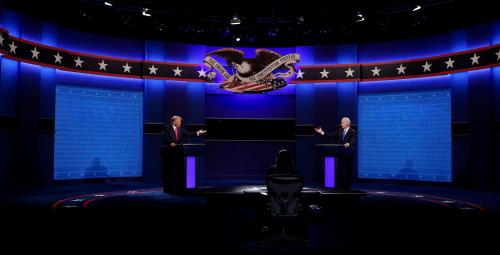
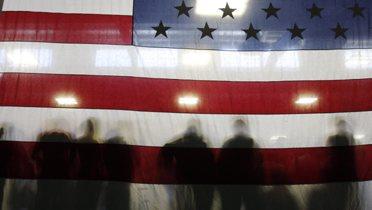
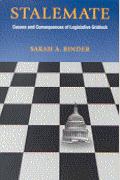
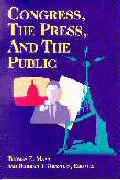
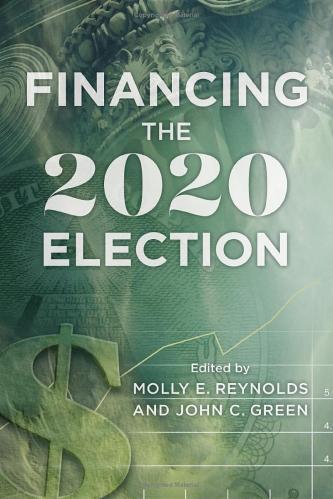




Commentary
The liberal faction of the Democratic party is growing, new polling shows
January 11, 2019